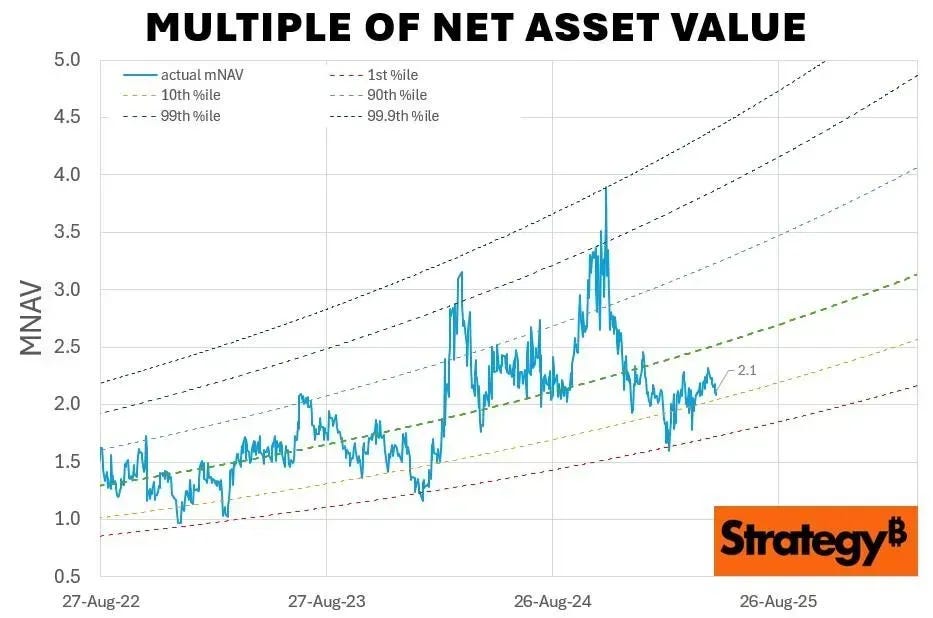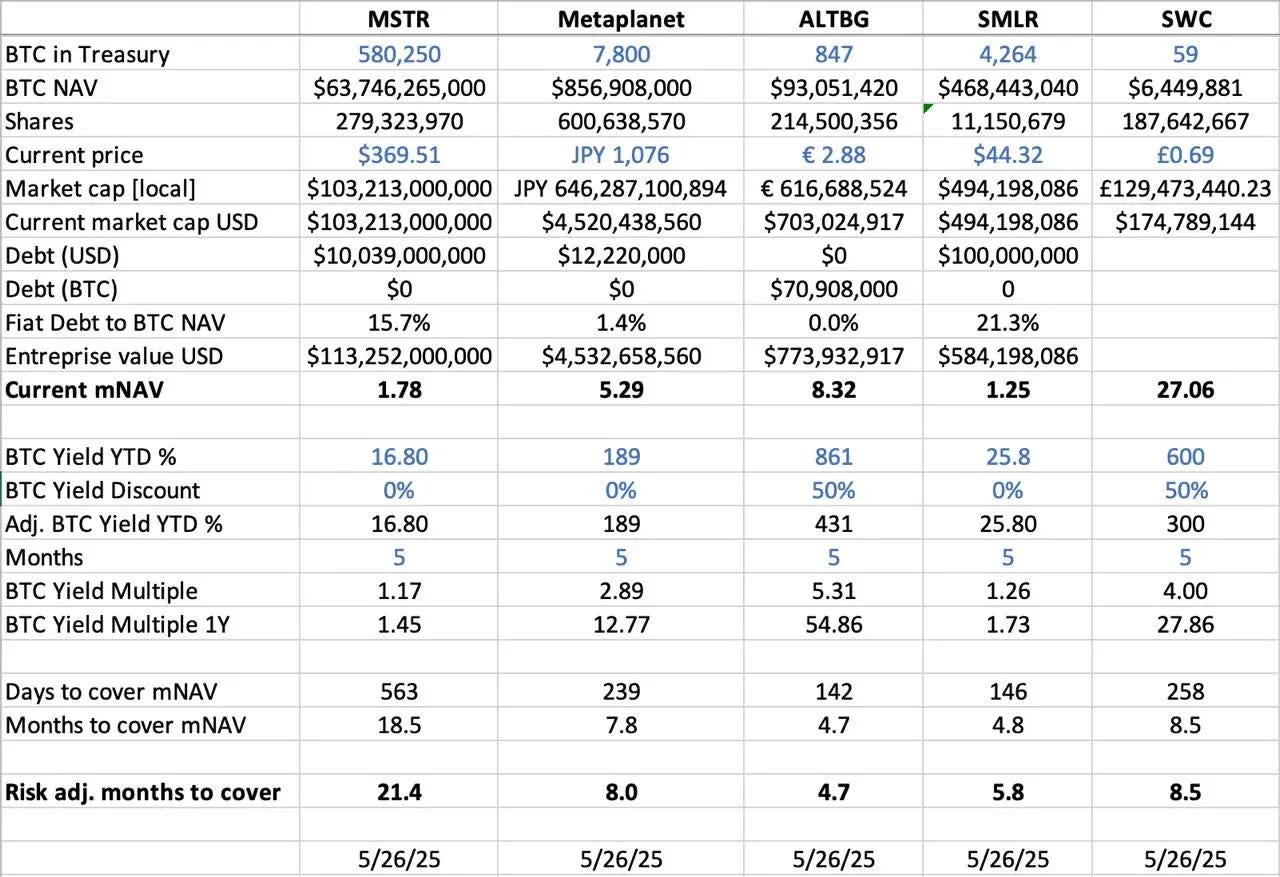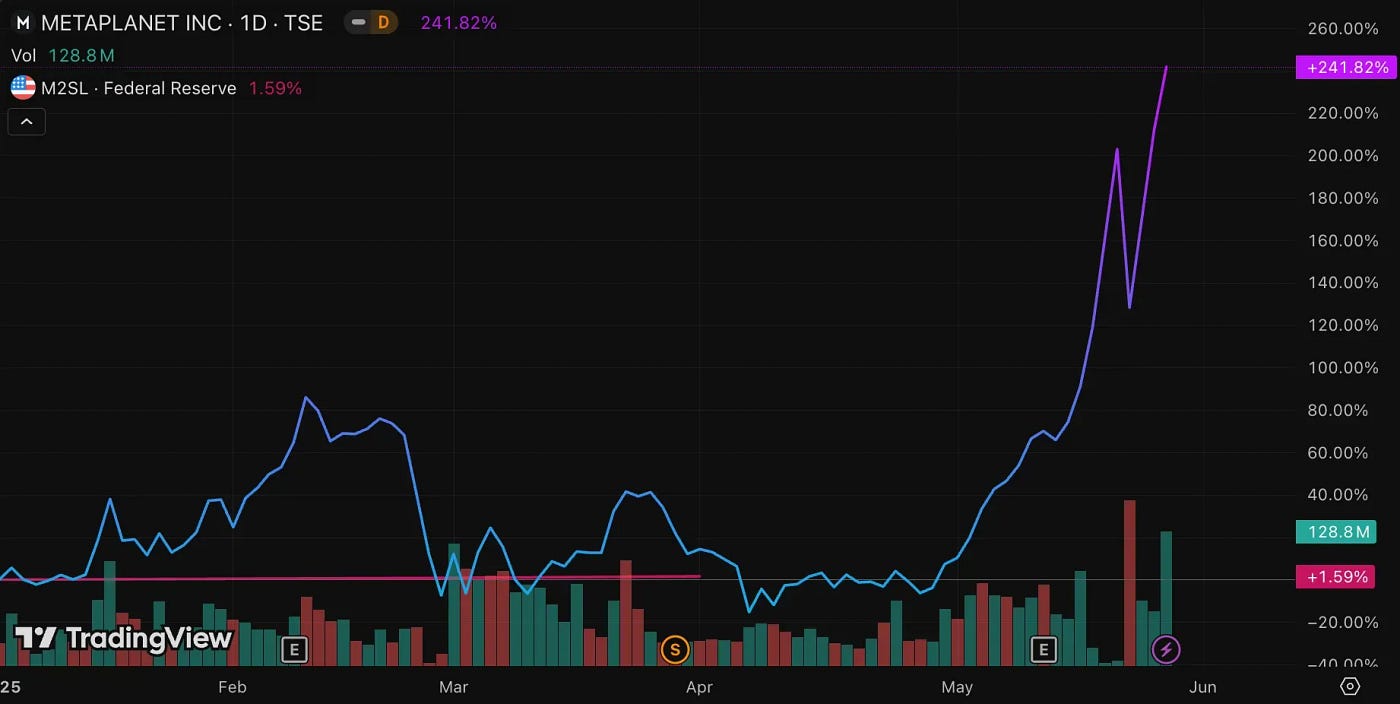Our Investment in SBET: A New Chapter in the CeDeFi Convergence
We are delighted to announce our participation in SharpLink Gaming, Inc.’s (NASDAQ: SBET) $425 million Private Investment in Public Equity. This transaction represents a differentiated exposure to ETH-native corporate treasury strategies, with a structure that offers both optionality and long-term capital appreciation. This investment reflects our strong conviction in Ethereum’s role within U.S. capital markets and supports our broader thesis on the institutionalization of crypto assets across the financial system.
Why We Invested
ETH vs. BTC: Divergence in Productive Value
ETH stands out as a productive asset with inherent yield-generating capabilities, a stark contrast to BTC, which lacks native yield. BTC-based strategies, such as MicroStrategy’s, function primarily as capital raising vehicles without yield on the underlying asset, resulting in higher leverage risk. In contrast, SBET could harness ETH’s staking and DeFi ecosystem to compound value directly on-chain, which might be accretive to stakeholers.
To date, no ETH staking ETF has been approved under current regulatory frameworks, the public markets lack exposure to the economic potential of Ethereum’s yield layer. We believe SBET offers a differentiated path. Under Consensys’s stewardship, the company has the potential to operationalize protocol-native strategies that could generate substantial on-chain returns, modeled to exceed projections for future ETH staking ETFs.
Meanwhile, ETH’s higher implied volatility (69 vs. BTC’s 43) introduces asymmetrical upside optionality for equity-linked structures. This enhances the appeal for investors deploying convertible arbitrage and structured derivative overlays, particularly in scenarios where volatility becomes a monetizable asset rather than a risk factor.
Strategic involvement by Consensys
We are proud to partner with Consensys, the lead investor in this $425 million PIPE. As the most effective executor of Ethereum’s commercialization, Consensys brings a unique combination of technical authority, product ecosystem depth, and operational scale, making it the ideal investor to help shape SBET’s evolution as an Ethereum-native corporate vehicle.
Founded in 2014 by Ethereum co-founder Joe Lubin, Consensys has been instrumental in translating Ethereum’s open-source foundations into scalable, real-world applications: from the EVM and zkEVM (Linea) to MetaMask, which has onboarded tens of millions to Web3. With over $700 million raised from premier investors like ParaFi and Pantera, and a strong track record of strategic acquisitions, Consensys is the most deeply embedded commercial operator in the Ethereum ecosystem.
Joe Lubin’s appointment as Chairman brings more than symbolic alignment. As someone who helped architect Ethereum’s core design and now leads one of its most important infrastructure companies, Joe has a uniquely comprehensive view of Ethereum’s product roadmap and asset dynamics. His earlier experience at Wall Street also equips him with the capital markets fluency needed to guide SBET’s integration into institutional financial frameworks.
In SBET, we see a unique asset paired with the most capable Investor. This synergy creates a powerful flywheel: protocol-native treasury strategies backed by protocol-native leadership. With Consensys at the helm, we believe SBET is positioned to become a flagship example of how Ethereum’s productive capital can be institutionalized and scaled within traditional capital markets.
Market Valuation Context
To contextualize SBET’s opportunity, we try to analyze the valuation dynamics of different crypto treasury strategies.
MicroStrategy: The Trailblazer in Crypto Treasury Strategies
MicroStrategy has set the benchmark for crypto treasury strategies, amassing 580,250 BTC valued at $63.7 billion as of May 2025. MSTR’s approach — raising low-cost debt and equity to acquire BTC — has inspired a wave of corporate adopters, demonstrating the viability of crypto as a reserve asset.
As of May 2025, MSTR holds 580,250 BTC (~$63.7B), and trades at 1.78x mNAV, underscoring investor demand for regulated, levered exposure to crypto assets via public equities. This premium reflects the confluence of three factors: leverage-induced upside, index eligibility, and ease of access relative to direct crypto exposure.
Historically, MSTR’s mNAV has ranged from 1x to 4.5x between August 2022 and August 2025, illustrating how market sentiment drives valuations. Peaks at 4.5x coincide with BTC bull runs and significant MSTR purchases, signaling strong investor enthusiasm, while dips to 1x reflect periods of market consolidation, offering a window into the cyclical nature of investor confidence.

Comparative Peer Analysis
We conducted a cross-sectional analysis of key public companies with crypto treasury strategies:
- BTC NAV(Net Asset Value): The total value of BTC holdings in USD. MSTR leads with $63.7 billion (580,250 BTC), followed by Metaplanet ($856.9 million, 7,800 BTC), SMLR ($468.4 million, 4,264 BTC), ALTBG ($93 million, 847 BTC), and SWC ($6.4 million, 59 BTC).
- mNAV (Multiple of Net Asset Value): The ratio of market cap to BTC NAV, indicating the premium at which the stock trades. SWC commands the highest premium at 27.06x, driven by its small BTC base and market enthusiasm. ALTBG (8.32x) and Metaplanet (5.29x) also trade at elevated multiples, while MSTR (1.78x) and SMLR (1.25x) reflect more tempered premiums due to their scale and debt levels.
- BTC Yield YTD % (Year-to-Date): The percentage increase in BTC per share, adjusted for dilution. Smaller-cap names exhibit higher per-share BTC yield due to active accumulation (ALTBG: 431%, SWC: 300%). These yield profiles inform investor perception of capital efficiency and compounding capability.
- Days/Months to Cover mNAV: The time required to accumulate enough BTC to match the current mNAV premium. Based on the BTC yield rate, ALTBG and SMLR could theoretically close their mNAV gap in under 5 months. This informs potential alpha in NAV compression trades and relative mispricings.
- Risk Considerations: MSTR and SMLR carry higher risk with debt-to-NAV ratios of 15.7% and 21.3%, respectively, making them vulnerable to BTC price declines, unlike debt-free peers like ALTBG and SWC.

Metaplanet in Japan: A Macro Market Case Study
Valuation gaps often stem from differences in asset reserve size and capital allocation frameworks. However, regional capital market dynamics are just as critical in understanding these divergences. A compelling example is Metaplanet, often dubbed the “Japanese MicroStrategy.”
Its valuation premium reflects not only its Bitcoin holdings but also distinct structural advantages tied to Japan’s domestic market:
- NISA Scheme Advantage: Japanese retail investors are aggressively allocating to Metaplanet through NISA (Nippon Individual Savings Account), which allows tax-exempt capital gains up to ~$25,000, far more attractive than paying up to 55% in taxes on direct BTC holdings. According to SBI Securities, Metaplanet ranked as the most purchased stock across all NISA accounts during the week leading up to May 26, 2025, fueling a 224% rally over the past month.
- Japan’s Bond Market Dislocation: With a staggering 235% debt-to-GDP ratio and 30-year JGB yields climbing to 3.20%, the Japanese bond market is showing signs of structural stress. Investors are increasingly viewing Metaplanet’s 7,800 BTC reserve as a macro hedge, protecting against yen depreciation and domestic inflation.

SBET: Positioning for Cross-Market Dominance
When operating in public markets, regional capital flows, tax regimes, investor psychology, and macro conditions matter as much as the asset itself. Understanding these jurisdictional nuances is key to uncovering asymmetric opportunities in crypto-public equity plays.
SBET, as the first public vehicle centered on ETH capital, is similarly positioned to benefit from strategic jurisdictional arbitrage. We see an opportunity to solidify this leadership through dual listings in Asia like HKEX or Nikkei to unlock regional liquidity and defend against narrative dilution. This cross-market strategy would position SBET as the definitive ETH-native public asset, globally recognized and institutionally relevant.
The Institutionalization of Crypto Capital Structures
The convergence of CeFi and DeFi marks a pivotal shift in the evolution of crypto markets, signaling their maturation and integration into broader financial ecosystems. On one hand, protocols like Ethena and Bouncebit exemplify this trend by blending centralized components with on-chain mechanics, extending the utility and accessibility of crypto assets.
On the other hand, the fusion of crypto with traditional capital markets reflects a deeper macro-financial transformation: the emergence of crypto as a legitimate and institutional-grade asset class. This evolution has unfolded across three key phases, each representing a significant leap in sophistication:
- GBTC: As one of the earliest institutional gateways to BTC, GBTC provided regulated market exposure but lacked a redemption mechanism, leading to persistent price dislocations from NAV. While foundational, it underscored the structural limitations of legacy wrappers.
- Spot BTC ETFs: Approved by the SEC in January 2024, these vehicles introduced daily creation/redemption mechanisms that tightly track NAV, unlocking greater liquidity and institutional access. However, their passive nature means they do not capture staking, yield, or active value creation, key components of crypto’s native potential.
- Corporate Treasury Strategies: Firms like MicroStrategy, Metaplanet, and now SharpLink have advanced the playbook by integrating crypto into their treasury operations. This stage goes beyond passive holding, but leveraging strategies like yield compounding, tokenized finance, and on-chain cash flow generation to enhance capital efficiency and drive shareholder returns.
From GBTC’s rigid structure to the ETF breakthrough and now the rise of yield-optimized treasury models, this trajectory illustrates how crypto is being absorbed into the architecture of modern capital markets, offering increased liquidity, sophistication, and value-creation opportunities.
Our Conservative Stance
While we are deeply optimistic about SBET’s prospects, we remain vigilant about potential challenges:
- Premium Compression Risk: If SBET trades persistently below NAV, the equity issuance mechanism could become dilutive. This was notably the case with GBTC’s prolonged discount period prior to ETF conversion.
- ETF Cannibalization Risk: If ETH ETFs gain staking approval and scale their AUM, they may offer a simpler, regulated alternative, potentially diverting capital despite their lower yields, as investors often prioritize familiarity and ease of access.
Nevertheless, we firmly believe SBET’s strategy, rooted in ETH’s native yield capabilities, positions it to outperform ETH ETFs, delivering a compelling blend of growth and income potential over the long term.
In all, our investment in SharpLink Gaming’s $425 million PIPE reflects our strong conviction in Ethereum’s transformative role in corporate treasury strategies. Backed by Consensys’s expertise, Joe Lubin’s visionary leadership, SBET is poised to lead the next wave of crypto-driven value creation. As the convergence of CeFi and DeFi reshapes global markets, we are proud to support SBET in its mission to deliver exceptional returns, reinforcing our commitment to identifying high-potential opportunities in this evolving landscape.
Disclaimer:
- This article is reprinted from [Medium]. All copyrights belong to the original author [YettaS]. If there are objections to this reprint, please contact the Gate Learn team, and they will handle it promptly.
- Liability Disclaimer: The views and opinions expressed in this article are solely those of the author and do not constitute any investment advice.
- Translations of the article into other languages are done by the Gate Learn team. Unless mentioned, copying, distributing, or plagiarizing the translated articles is prohibited.





